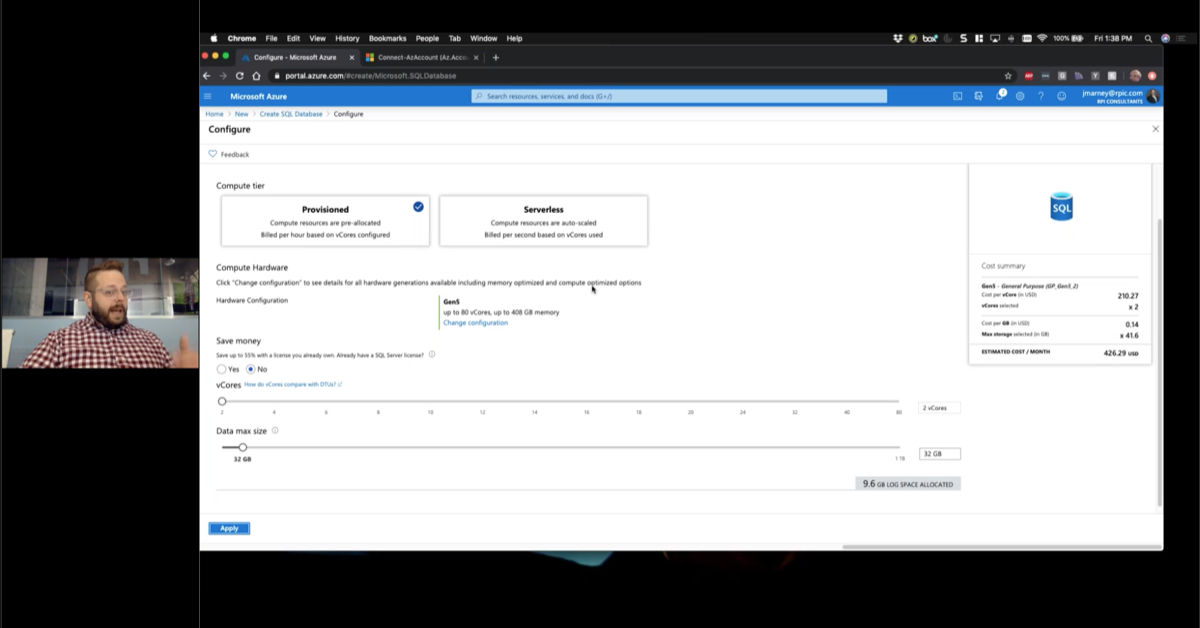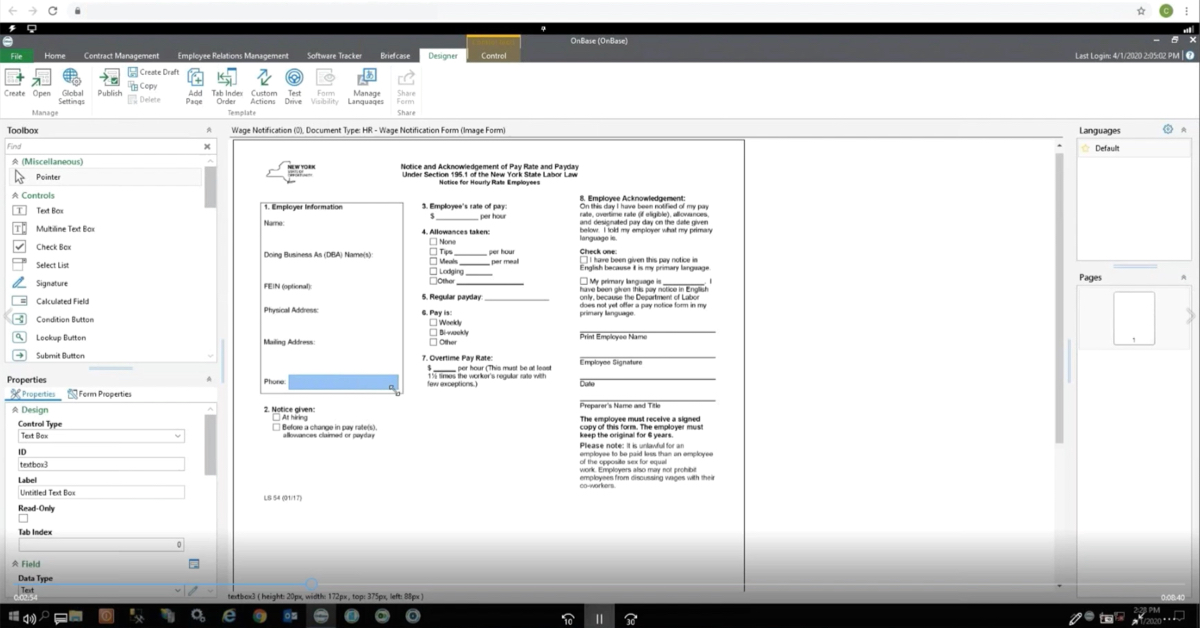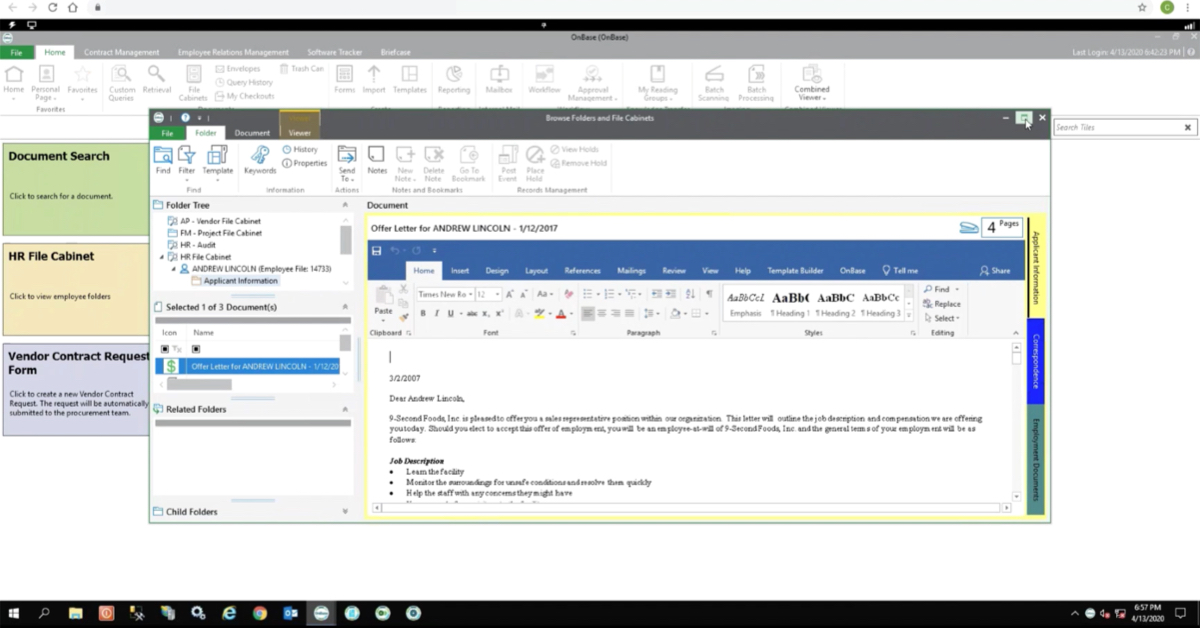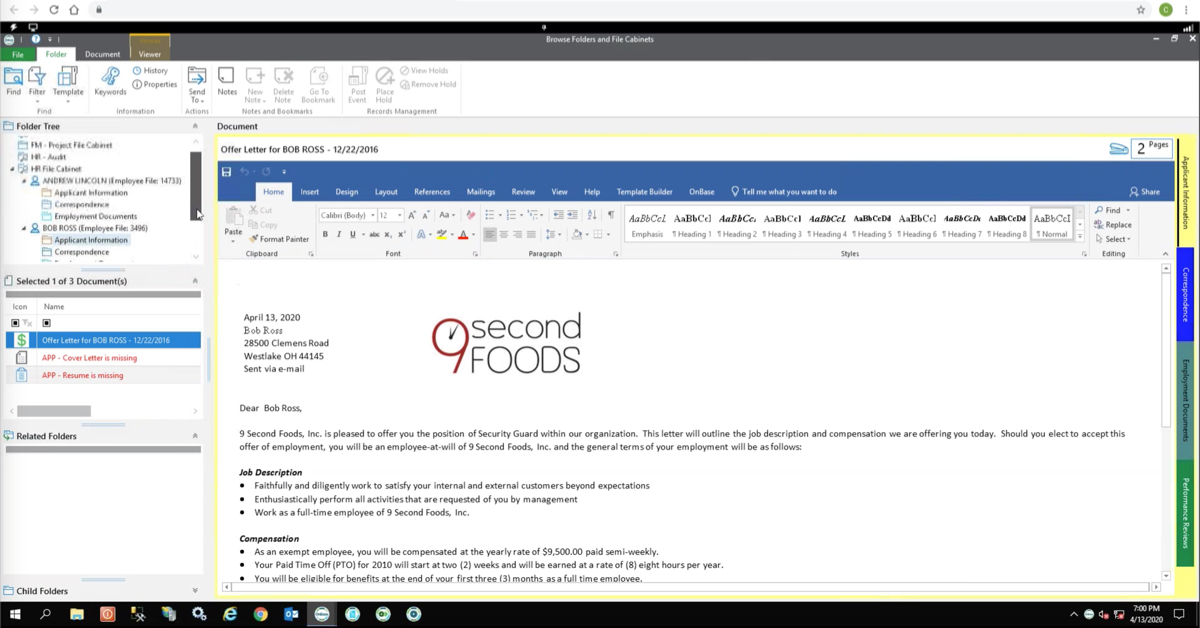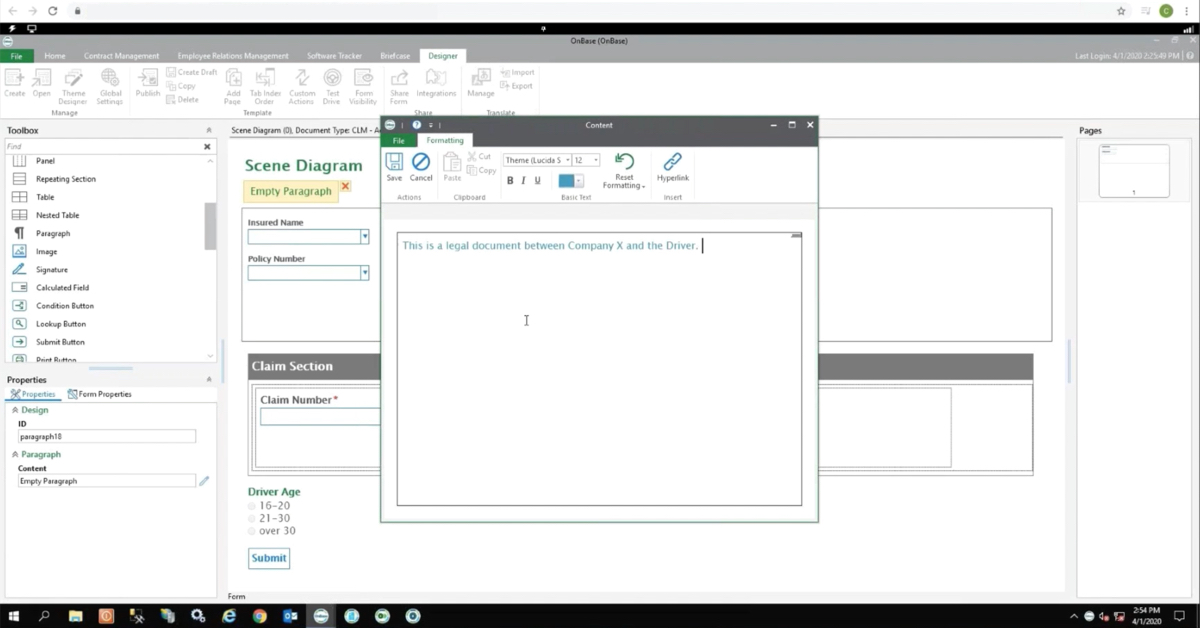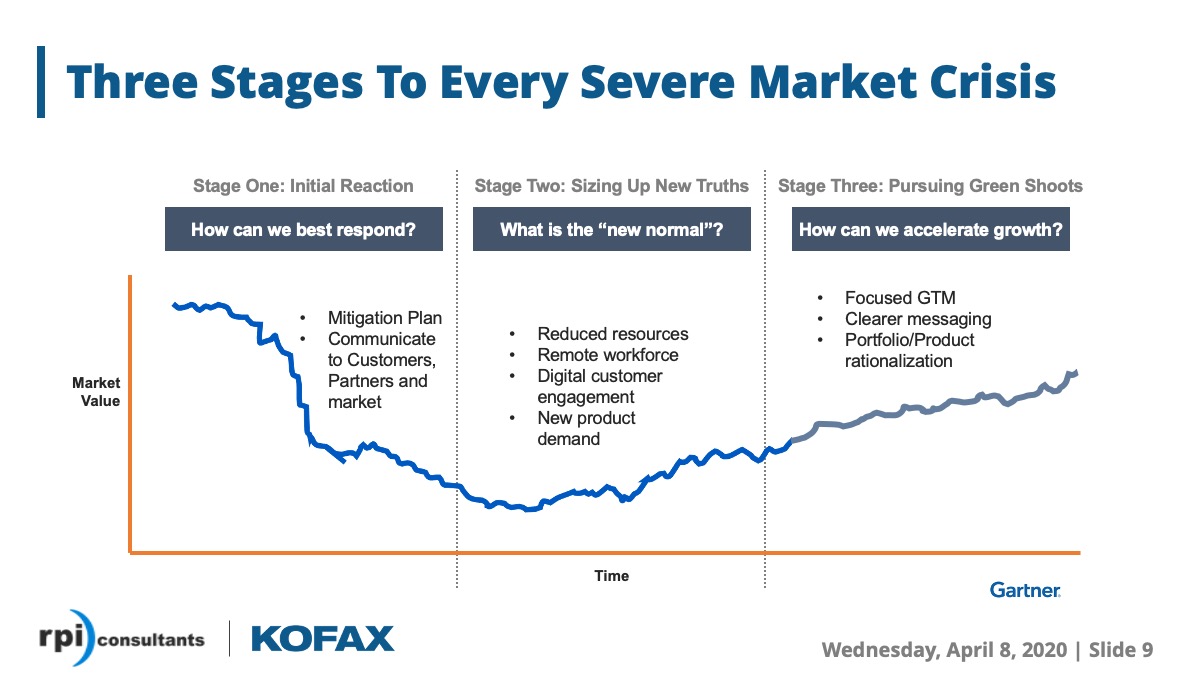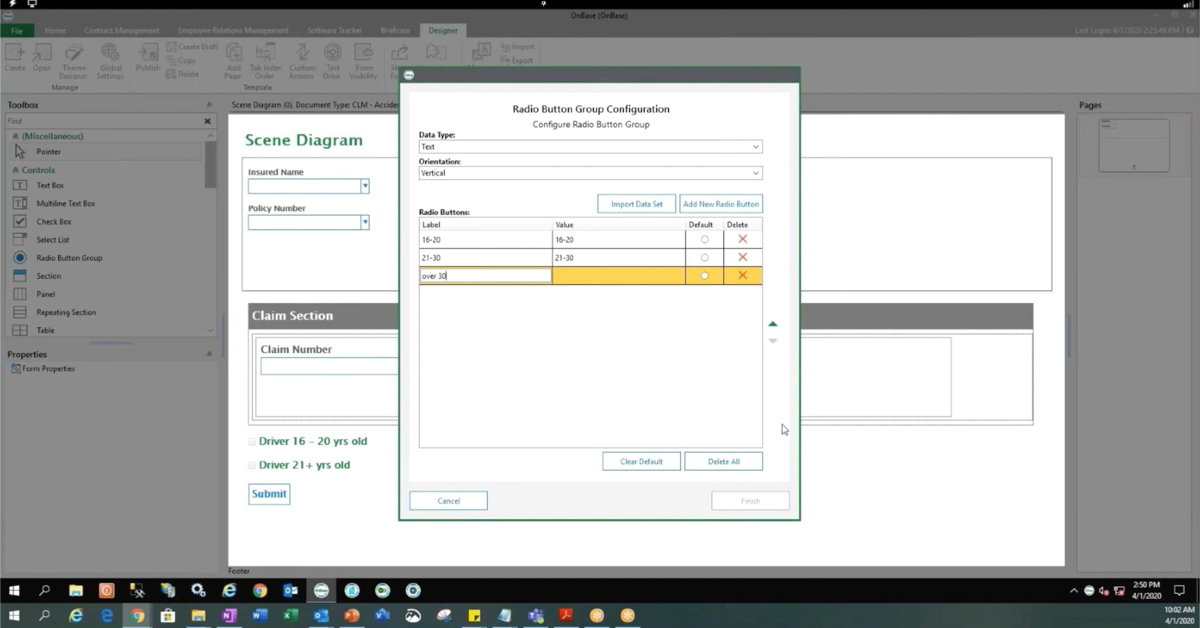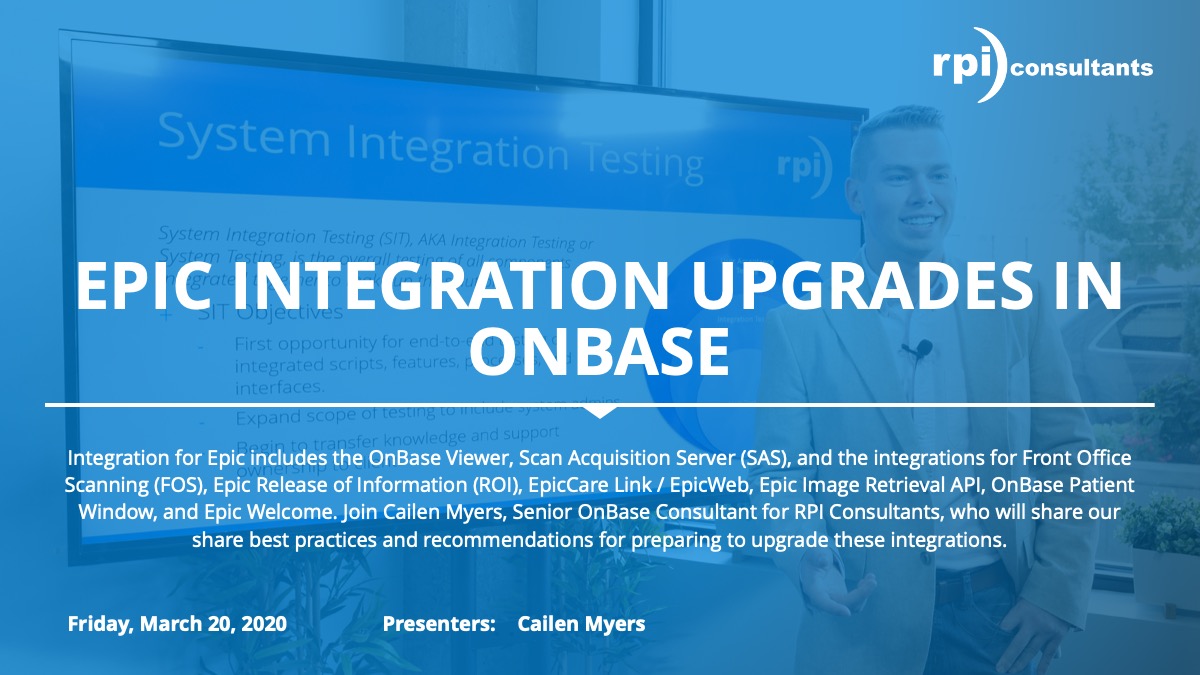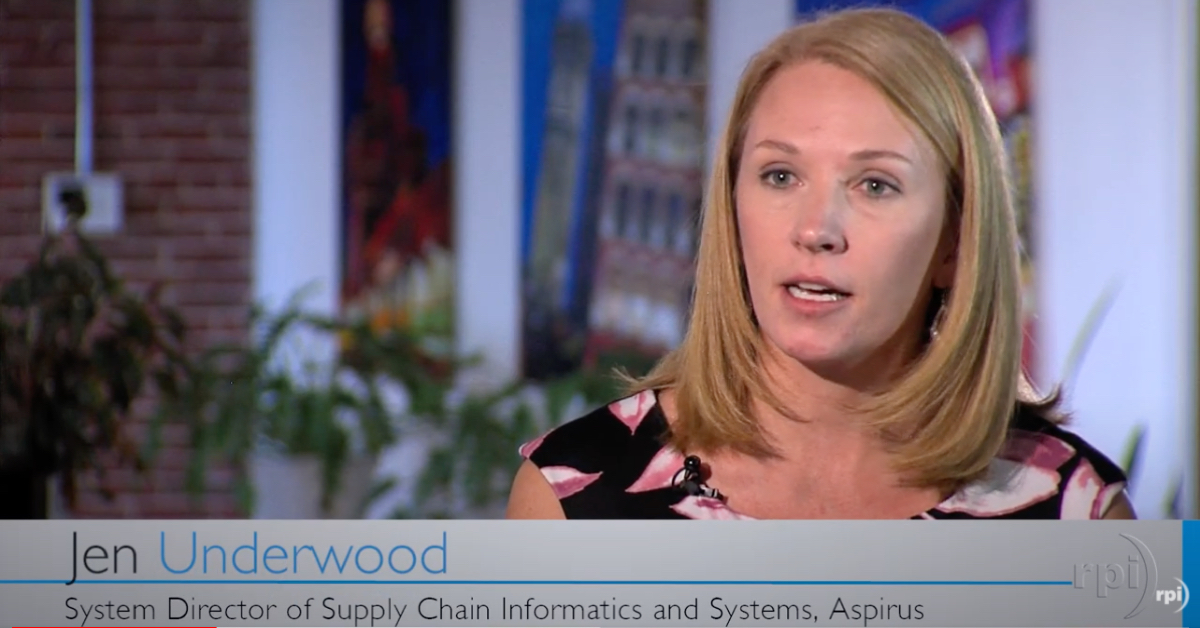John Marney:
Hello, and thank you for joining RPI Consultant’s Summer Webinar Series. We’re going to be discussing Yoga SMS, document approvals for your mobile device. I’m John [Marney 00:00:17] and this is Alex Lindsey who will be helping me present today.
First, a little bit about RPI. Many of you may know this already, but for those of you who don’t, we’ve been working with the Perceptive products for around 16 years now. We’ve also been working with Kofax products for a long time. In the last year, we’ve really gotten ourselves familiar with the Hyland products, as well. For this organization, very familiar with the full suite of products.
We have around 20 team members, and growing, on the Perceptive practice. We’re based here in Kansas City. The remainder of our company, around 70 consultants, focuses on the Infor Lawson products. Our headquarters are in Baltimore, we also have an office out of Tampa.
Alex Lindsey:
In a lot the work that we do, again, like John said, is around the Perceptive products, but we do this for the Kofax, as well as for the Hyland pieces as well, so eForm development, iScript development. No matter how big or small, we’ve pretty much tackled everything at this point. Workflow designs, and redesigns, which I personally like to do quite a bit. So if you have an old solution that you implemented, let’s say, in 2008, for instance, and you want to reexamine that, we can do that. Upgrades, health checks, if you want to take a look under the hood, just see … Get some outside perspective of how your solution’s working. Security audits, migrations, and we also have expertise within clinical and HL7.
John Marney:
Fantastic. So first, Alex, what is Yoga?
Alex Lindsey:
That’s a great question, John. Yoga is an HTML5 front-end built by RPI. We’ve actually built this ourselves. It’s primarily for use within Perceptive Content, so it basically sits on top of Perceptive Content. It allows you to do a lot of things with your existing solution, but through an HTML5 browser. This means your tablets, your smart phones, things like that.
Some of the benefits, there’s no Java, so everyone that loves WebNow, sorry. There’s no Silverlight. Just a modern browser. Yoga Studio is also a mode.js application server.
John Marney:
Right. That’s the back-end for the Yoga front-end.
Alex Lindsey:
It also connects the Perceptive via integration server calls.
John Marney:
Right. And so what is Yoga SMS? Well, it is not Yoga, they are separate products. Yoga SMS is a web service for mobile document processing. What that means is, this is something that will integrate directly into your Workflow to send a text message and a document image to a verified phone number, so that you can get your document images and approvals, is really what we’re talking about, out to users away from a computer.
This easily integrates with your existing Workflow, so this is really a layer that sits on top of what you have right now. And really, in our design considerations, this is perfect for invoices in Accounts Payable. That’s what we’re gonna be demonstrating to day. That was really the main driver behind why we built this.
Reasons to use Yoga SMS. Number one, if you have workers in the field who need access to documents quickly, we’ve worked with a client recently who had a lot of field locations, and they had workers out visiting their customer sites. If they … if we needed to reach them to get them to review documents or approve them, this is perfect for that application.
Additionally, executive approvers who are always on the go, if your CEO or CFO is always clamoring for streamlined mobile approvals, which we hear a lot, this is perfect for them as well.
Additionally, this allows for maximum device flexibility. What I mean by that is, you never know how a certain piece of software’s gonna run on any given computer, or tablet, or phone. For this, if the device can receive an MMS and an SMS, then it’ll work. Any cell phone that can … [inaudible 00:04:04] smart phone. If you’re using a flip-phone, you’re out of luck … that can view these images, can do this and it’ll work the same way for everyone.
Additionally, this will allow for improved Workflow turn-time. It’s a lot easier for people to ignore email and they’re in-the-shop Workflow, than it is to ignore that little notification icon on your iPhone. I think this can drive more productivity among your users.
Alex Lindsey:
So what are some of the requirements around using Yoga SMS? Primarily, we’ve developed this around Perceptive Content 7.1.5. That was the go-ahead version. It may work in older versions, and it’ll probably work in 7.2 as well, again, just testing it out.
John Marney:
It’ll definitely work in 7.2, and it more than likely will work in anything over 7.0. That’s just not what we developed it on. The main driver there is it uses certain integration server calls, which may not be supported in older versions. Again, we can definitely … We can even make it not use integration server at all, if need be.
Alex Lindsey:
Yeah. It’s also platform agnostic, so you can technically put this on top of a Kofax Workflow, or a Hyland, something like that, to basically work into your solution. So it’s not just for this. It’s flexible enough to do quite a few other things.
John Marney:
That’s right. It requires an integration server license with transaction pack. Most anybody will have that who has installed Perceptive Content in that last five years. If you’re not sure, we can always hop into a call with you to quickly find out.
And all it takes to deploy this is one small executable that we developed to facilitate that web service call, and a few minor changes to your existing Workflow scripts. Of course, if you don’t have an approvals Workflow and you’d like to start one, we can help you with that, too.
Okay, a few features. This product, Yoga SMS, can be used with all types of approvals. Many of you will have one of these, probably not multiple, but the three main types are Workflow, where documents are routed from sub-queue to sub-queue, or from work queue to work queue, and users will route their approval or rejection.
The second, and probably most common, is stamp-based approvals, where users are required to affix “approved” and “rejected,” or maybe other types of annotations to the document and route it forward. That’s what we’re gonna be showing today.
Finally, tasks that are applied to the document requesting user, or multiple users approvals, are supported as well. Again, this is a layer that sits on top of what you have. This leverages your existing approval scripts, and your existing approval matrix. The one caveat to that is we would need to modify your approval matrix to include a phone number, so that we can actually send the text message.
Of course, we’re very concerned about security. On a first approval for any given phone number, it will ask for email verification. That email address should already exist in your approval matrix, so we can just leverage that.
Of course, this is our product, so this is basically infinitely customizable. Any language, or modifications to the images that would make sense for your environment, we can make.
So now, we’re gonna walk through a quick example process for how Yoga SMS would be used, and then we’re actually gonna show a demonstration video.
Alex Lindsey:
Basically, an AP clerk will key in their invoice, maybe you have OCR technology on the front-end, like KTM, or Intelligent Capture, that’s basically pulling some metadata. Maybe you’re just using the document without an eForm, or if you have an eForm, basically this AP clerk is filling in the data, to basically prep the document for approvals.
They will then route the document forward. Again, like John mentioned earlier, we’re not trying to revamp, or completely change a solution, just sitting on top. So those scripts will basically kick off, send an SMS to that first-level approver, so a department manager. Maybe that’s all you need. They’ll get the text that’ll ask them to approve or reject the invoice. They’ll reply back to that same text stream, you know, approve with a specific number and you’ll see that demonstrated as well.
John Marney:
So in this scenario, maybe that invoice triggers a second-level approver. In this case, that would go to the department director. They will receive the same text message, and the invoice image, but it will actually display the manager’s approval on there with a stamp annotation, so you’ll be able to see that reflected on the document.
They, of course, will also reply with their approval, and that will trigger the system to send it back to the accounts payable Workflow so they can process it for payment.
So now we’re gonna go ahead and do a quick video demonstration.
Demo:
I’m gonna go ahead and demonstrate Yoga SMS. I am currently logged into Perceptive Content 7.1.5. That said, Yoga SMS could work with just about any platform, whether that be Lawson, APIA, or Hyland OnBase, or anything like that. I’m going to demonstrate how Yoga SMS would work with a typical invoice approval process. However, it could be used with really any sort of approval or Workflow, such as human resources, or higher education, or any sort of Workflow that requires on-the-go, or mobile viewing.
So I have a document waiting for me. This is an invoice document. Go ahead and open it up. On the left, you’ll see that this is an invoice for 10 widgets. On the right is my trusty APE form, and it’s coded correctly. Most accounts payable approvals are driven off of the GL account in the amount. That is the case with this as well.
In setup in this environment, I have the normal stamp approvals process, which is configured in many environments out there. Maybe you’re using Workflow, where your users route it to an approved or rejected queue. Or you’re using tasks. We can actually integrate with any of those approval processes, and really, Yoga SMS can hook right into your existing process and use your existing approval matrix without many changes at all.
Last thing to note is you’ll notice there’s a confidential annotation that has been applied to this document over here on the bottom left. Important to note because you’ll see that show up on the mobile device as well.
I’m going to go ahead and route this document forward to kick off approvals. Send to approvals. What that does is that sends a message out to our Yoga SMS web service with all the information … Well, I should say it triggers the Workflow scripts that would typically identify the next approver. That will send the information to Yoga SMS with all the relevant information for phone number and email address to send a text message to that person for approval.
I’m going to go ahead and cast my phone onto the recording here. Soon, we’ll see a text message show up asking me to approve or reject the document. Okay, here we go. So this text message is from our Yoga SMS service. I’m gonna go ahead and swipe to open. You can see that it has sent me a message saying, “Action required on this doc,” with ID 0079. Reply with approve or reject, and then the number.
So that is a text message, an SMS, and it actually sent as an MMS, the invoice image itself. So if I open that up, you can see this is the same image I had in Workflow, and again, there’s that confidential annotation that we had on the document. This is gray. We decided for now not to do colors, because it’s a little more easily readable on the mobile device.
I’m gonna go ahead and close that, and I’m gonna go ahead and approve this invoice by just replying, “Approve 0079.” And it will respond with a verification message, basically saying that it acknowledged it. Yes. So document 0079 routed successfully. Because that invoice was for $50,000 or greater, is actually going to trigger a second level of approvals.
My colleague, Michael Madson is going to show his phone now, and here in just a moment, we will see him receive a text message as well, asking for approval. Even better, what it will do is it will act just like a normal [inaudible 00:12:45] of Workflow, and you will see a stamp from my user on that document indicating my approval.
Again, this is triggering all the normal Workflow actions on the Perceptive Content back-end, and moving it around is necessary. So there’s no major modifications needed to existing approval Workflow. This just hooks right in.
And there it is, he’s received his text message, so he’s gonna go ahead and open that up, and he’s gonna take a look at that invoice image. Again, you can see that up there, on the upper left, that it has the stamp annotation from my user, just like you’d have in Workflow. He’ll review the invoice, close the image, and then he’ll reply with his approval or rejection.
Again, it will respond to him, basically verifying that the document has routed successfully. And there you have it. That’s very basic, but very common approval Workflow that is triggered out of Perceptive Content and utilized mobile devices. And it doesn’t have to be a phone. Typically, MMSs can also arrive on your tablet, or other mobile device.
So thank you, and if you have any questions, feel free to reach out.
John Marney:
That’s pretty much it. Any questions, we’ll take right now. If you’re interested in Yoga SMS, or want more information, contact myself. My email’s right down here, [email protected], or Jeff Lilienfeld. We’re more than willing to hop on a call with you.
All right. Any questions? No questions.
Audience:
So we have a couple people asking us to contact them after the fact with some interest. But as far as questions, I think this is just so smooth.
Alex Lindsey:
It’s so smooth.
Audience:
It’s so self-explanatory.
John Marney:
Other than the webinar going down in the middle. Yeah, it’s really pretty straight-forward product. I think we really do see a need for this out there. That’s why we made it. We’re very interested in helping anybody get this implemented.
I think that’s it. Like I said, any questions after the fact, feel free to reach out to us.
Audience:
We do have one question about-
John Marney:
We have one question. All right.
Audience:
What type of license is required for users?
John Marney:
For this product, there’s no additional Perceptive Content licenses required. RPI will be licensing this product, but for Perceptive, the great thing is, outside of that integration server license, which you don’t necessarily need. We can build this to work around that, if need be.
You don’t need any additional user licenses for this product. You don’t need any additional Workflow licenses. I guess I should say, you will need an iScript license, but if you don’t have that, you don’t have an automated approvals process anyway. So there you go.
Any other questions? I think one more?
Audience:
There’s a question around, can you have other stamps?
John Marney:
Absolutely, yeah. Right now, we just have built this to accommodate … First of all, we support any annotations on the document showing them when they’re output to you. So either it’s a highlight, a check-mark, et cetera. But as far as multiple kinds of stamps and different replies that you want to make on that document … So maybe it’s not as straight-forward as approve and reject. Maybe you want to have reject with reasons. We can accommodate any of that. We would just change that message that you reply with for all of those. Great question.
Audience:
And there’s another question around why did the document number change? I’m guessing that is …
John Marney:
Yeah. Great question. So that document number that you saw on the text message was not the same as the document number inside of Workflow. What that number was, was the unique number generated by Yoga SMS for that unique approval. So the first approver was 0079, I think, because that was their approval. And if, for whatever reason, another user were to try to text that number with “approve 0079,” that user is not married to that approval in the database, so it would not work. It would just send them an error.
Audience:
So essentially it’s like two different levels of security, one of which is that the text message that is returned needs to originate from that approver. The system knows that that is the approver. And then, second, they need to know that pin, to alleviate any potential chance of …
John Marney:
Correct. And of course, the actual layer of security there is your actual device security. You’ve got your passcode, or your thumbprint on the phone itself, which from a security standpoint, is a whole other layer that oftentimes, your network password can’t even be … Another thing to keep in mind is the number that that request originated from is unique to every installation of Yoga SMS, or implementation. So you would actually have your own phone number and other people wouldn’t know it. Great question.
Audience:
Oh, here’s a really good question. If it is not approved that day, can we push out another reminder, or is it reset automatically?
John Marney:
Yeah, absolutely. That’s a very great question. The way that that works is we want to leverage your existing approvals process. Right now, most approvals processes have an escalation or reminder built in. What we would do is leverage that existing reminder to basically resend the approval request. So they would receive a reminder, but we’re not actually gonna manage any sort of … We wouldn’t necessarily, we don’t right now, but if you wanted to, we could.
We wouldn’t manage the reminder period inside of Yoga SMS. We would allow you to configure that inside your normal Workflow, like you have right now, and leverage that.
Audience:
Another question is, do we have to have Yoga to use Yoga SMS?
John Marney:
Absolutely not. Yoga is just an optional platform. I wanted to clarify at the beginning that there’s a difference between the two. We actually do have a webinar on Yoga, if you’re interested, that you should be able to find on YouTube. But yes, Yoga SMS is completely stand-alone from Yoga.
Audience:
And I believe the one thing that does link Yoga with Yoga SMS, however, is Yoga Studio. Correct? So, once you have Yoga Studio installed, which is that mode.js server that sits behind these two, you’re able to very easily install Yoga, or Yoga SMS.
John Marney:
We actually have a couple different architectures that we built Yoga SMS on. So Yoga Studio’s not necessarily required. For those who want to leverage it, we can. It can help with some of the efficiency and some of the integration server calls we make, but …
Audience:
Yeah. And I guess one other question. We showed the concept that you can approve or reject, but the other question is, can it be moved to a research queue.
John Marney:
Absolutely. We just showed approve or reject because that’s the simplest use case for this. But we can really accommodate any scenario. It would take a little bit of customization to the service, but if you have five different statuses that you need to send that document to, we can accommodate that. You would just have different instructions sent to the user, and they would have different messages they would reply with.
Another question I anticipated, but we haven’t heard yet is, will they be able to see the accounting information, say, out of the eForm. Right now, we haven’t built that in. We wanted to make this streamlined to just get the image, look at the image, and approve. But we definitely can output, say, the GL account with the image and attach that along with it.
Okay, I think that’s all we had. Thank you everyone for attending. We hope to see you at our other webinars this week. So Sayonara.
Alex Lindsey:
Thank you.












